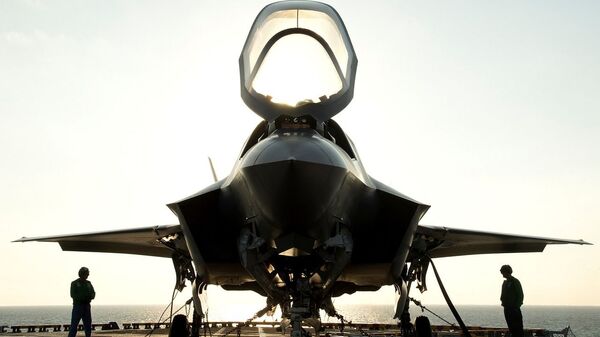Billionaire entrepreneur Elon Musk has asserted that the state-of-the-art F-35 US warplane “would have no chance against” a remote-controlled unmanned aerial vehicle (UAV).
“The competitor should be a drone fighter plane that’s remotely controlled by a human, but with its manoeuvres augmented by autonomy,” the SpaceX founder and Tesla chief executive tweeted on Friday.
The competitor should be a drone fighter plane that’s remote controlled by a human, but with its maneuvers augmented by autonomy. The F-35 would have no chance against it.
— Elon Musk (@elonmusk) February 28, 2020
The remark came after Lee Hudson, Pentagon editor for Aviation Week magazine, cited Musk as saying during a recent United States Air Force (USAF) conference that the fighter jet era has passed.
On her Twitter page, she questioned if Musk’s claims mean that “we need to rethink NGAD (Next Generation Air Dominance program pertaining to a future US sixth-generation air superiority fighter to replace the F/A-18E/F Super Hornet)”.
. @elonmusk says at #AWS20 the fighter jet era has passed. Does this mean we need to rethink NGAD? @TheDEWLine
— Lee Hudson (@LeeHudson_) February 28, 2020
When asked during the USAF conference whether he had “any innovative ideas about how aerial combat could be revolutionised”, Musk prompted “murmurs and laughter” by arguing it’s already pointless to talk the “fighter jet era”, according to Defence News.
“Locally autonomous drone warfare is where it’s at, where the future will be,” Musk said. “It’s not that I want the future to be this, that’s just what the future will be. […] The fighter jet era has passed. Yeah, the fighter jet era has passed. It’s drones,” he claimed.
As far as the F-35 fighter jet is concerned, this fifth-generation stealth fighter jet is believed to be the most expensive warplane in history, with the budget for the plane’s programme surpassing $1 trillion.
Even so, the aircraft reportedly continues to face more than a dozen issues that could put the lives of pilots at risk. Documents obtained by Defence News indicate that some F-35 pilots, particular, experience cabin pressure spikes which give them ear and sinus pain, while the jet receives structural damage at speeds beyond Mach 1.2 and has problems operating in areas with cold weather.


